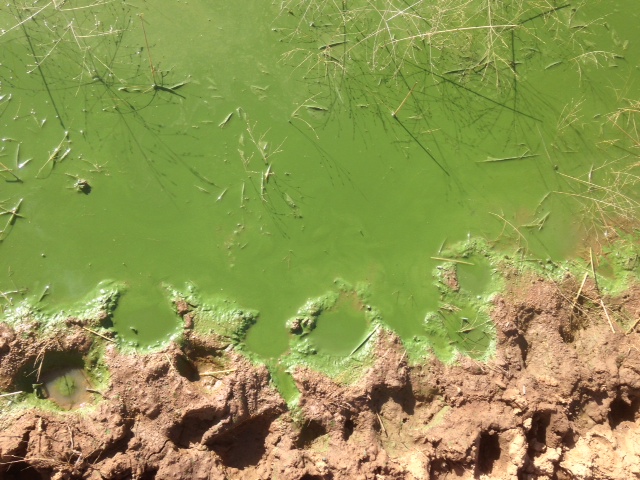Blue-green algae: what you need to know
PRODUCTION ADVICE - MARCH 2020 - ANIMAL HEALTH
By Linda Searle
District Veterinarian
Ph: 03 5881 9919 | M: 0427 629 740 | E: linda.searle@lls.nsw.gov.au
Blue-green algae are one type of algae found in waterways and dams. The Regional Algal Coordinating Committees (RACCs) issue algal alerts when the number of algae is multiplying (amber alert) and when a ‘bloom’ is present (red alert). This information can be found on the WaterNSW Algae site.
Blue-green algae can produce toxins that are harmful and potentially fatal to livestock. Poisoning occurs when stock take in reasonably large numbers of blue-green algae in a short period. Stock usually avoid visible scum, so poisonings usually occur when they cannot avoid drinking blue-green algae.
 Blue-green algae are more likely to occur when the water levels are low, and the water is warm, full of phosphorous and low in zooplankton. They can release neurotoxins that kill animals quite quickly or liver toxins that take 24-72 hours to kill stock.
Blue-green algae are more likely to occur when the water levels are low, and the water is warm, full of phosphorous and low in zooplankton. They can release neurotoxins that kill animals quite quickly or liver toxins that take 24-72 hours to kill stock.
Symptoms of blue green-algae poisoning can include:
- Nervous signs such trembling, staggering or coma
- Sudden death
- Signs of liver disease such as yellow mucus membranes, ill thrift and photosensitisation.
The animals may also scour or become dehydrated from refusing to drink contaminated water
You may also get decreased milk production from dairy cattle and decreased egg production in poultry.
We advise you to check dams and waterways for blue-green algae. If you suspect blue-green algae, we advise you to move stock to a new paddock with a water source free from algae.
For further information please refer to the following Primefacts:
Blue-green algae poisoning of livestock
Farm water quality and treatment - Algae
If you suspect poisoning in your stock, please contact your local district veterinarian on 1300 795 299.